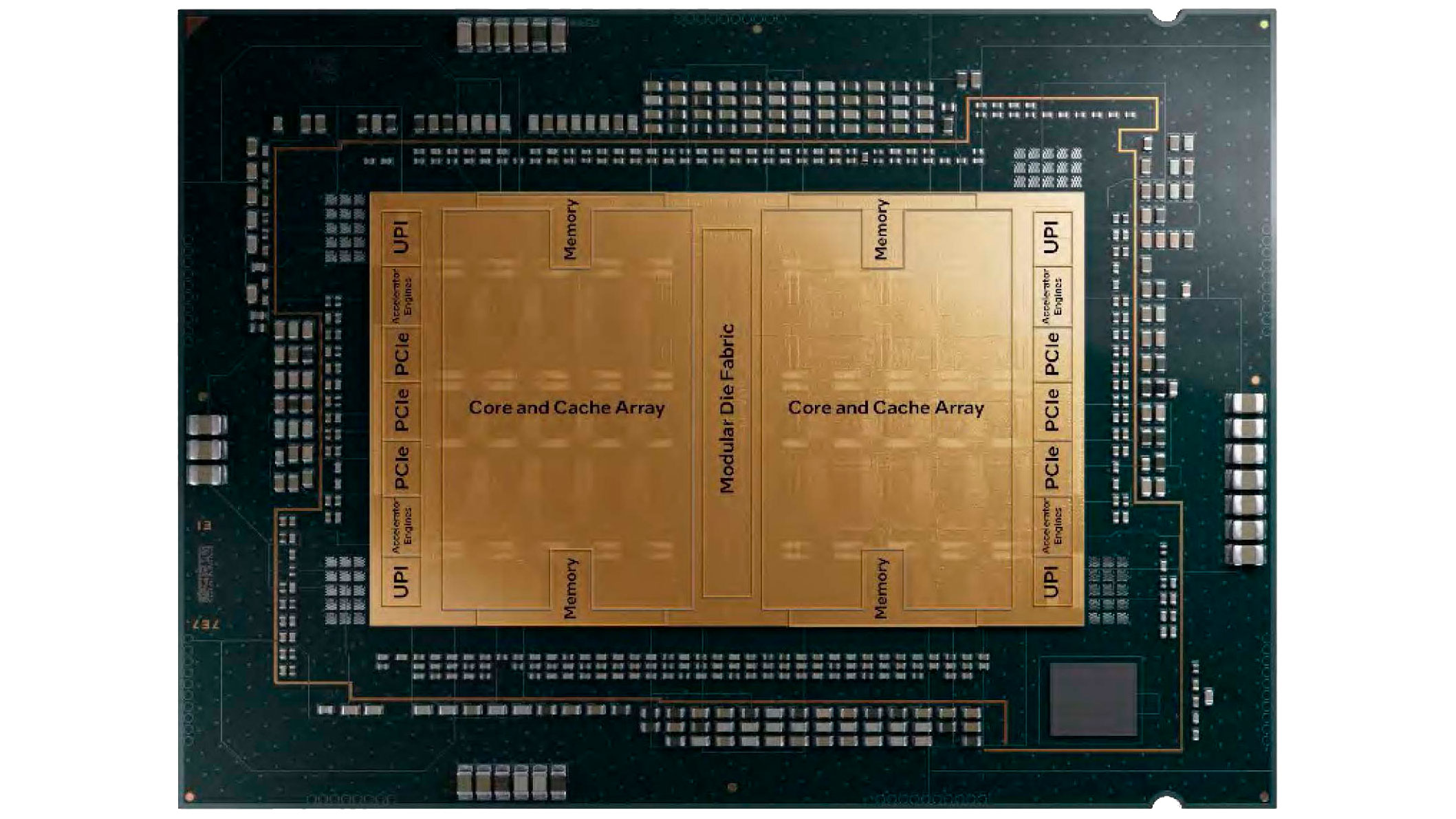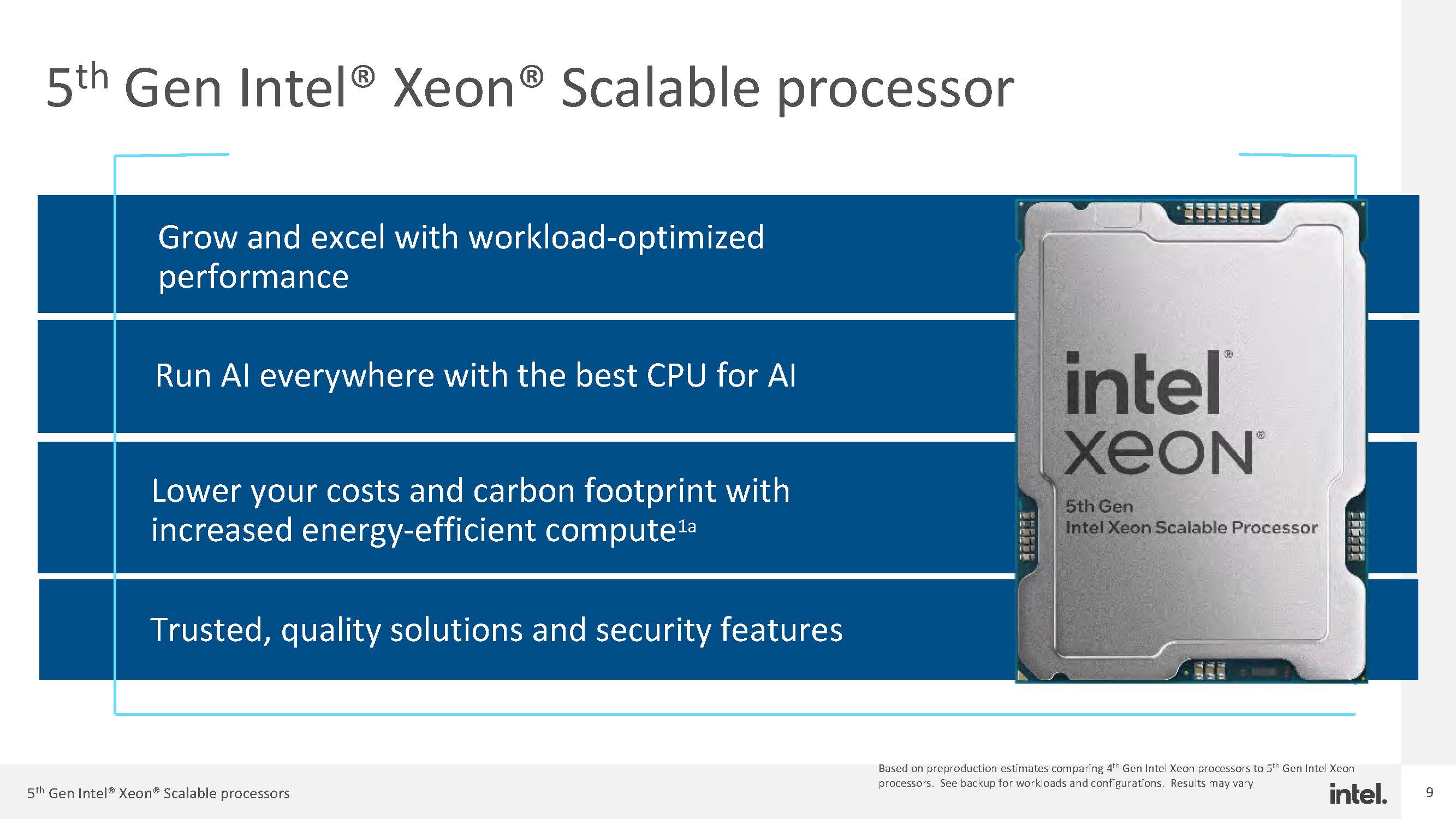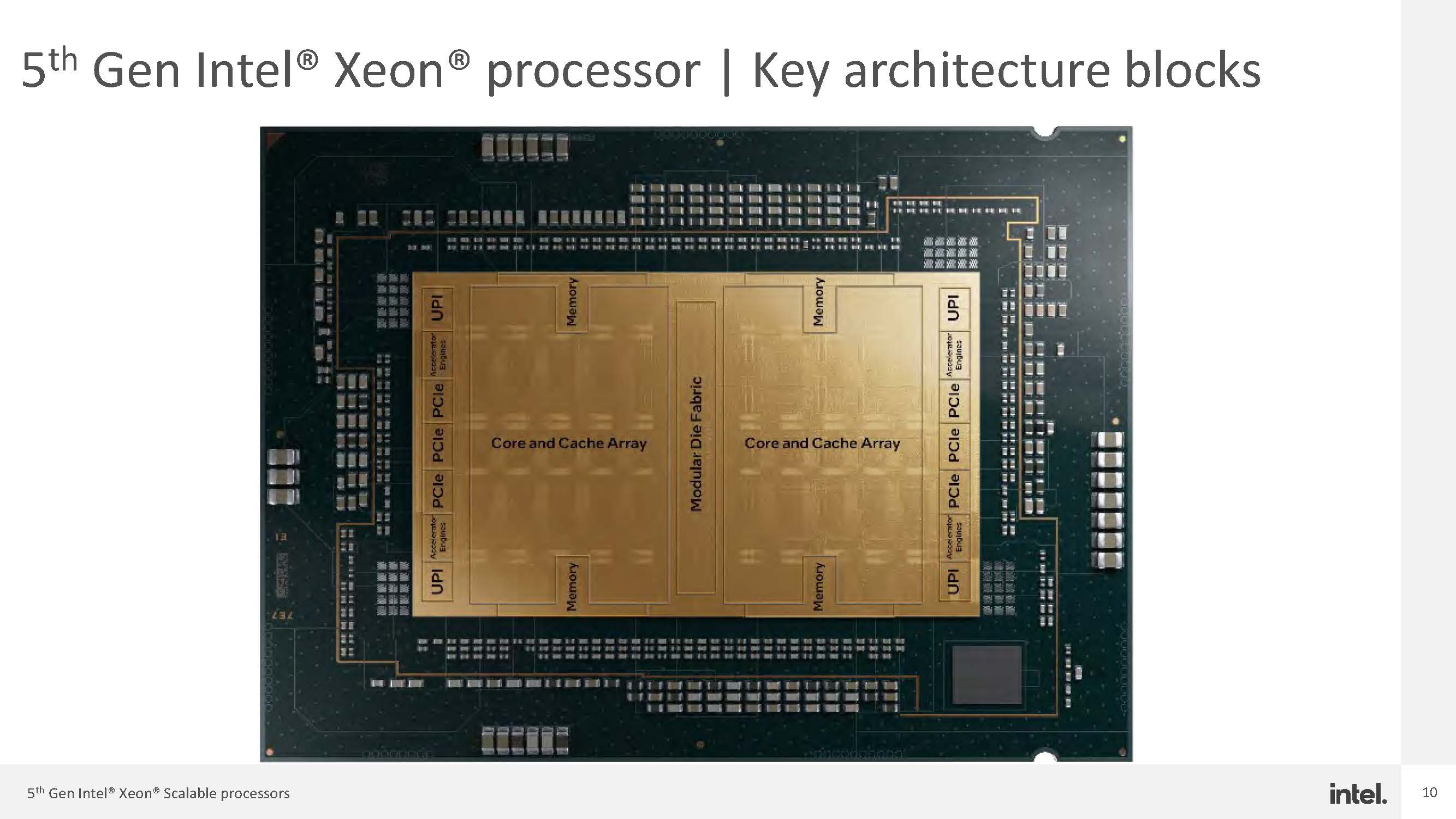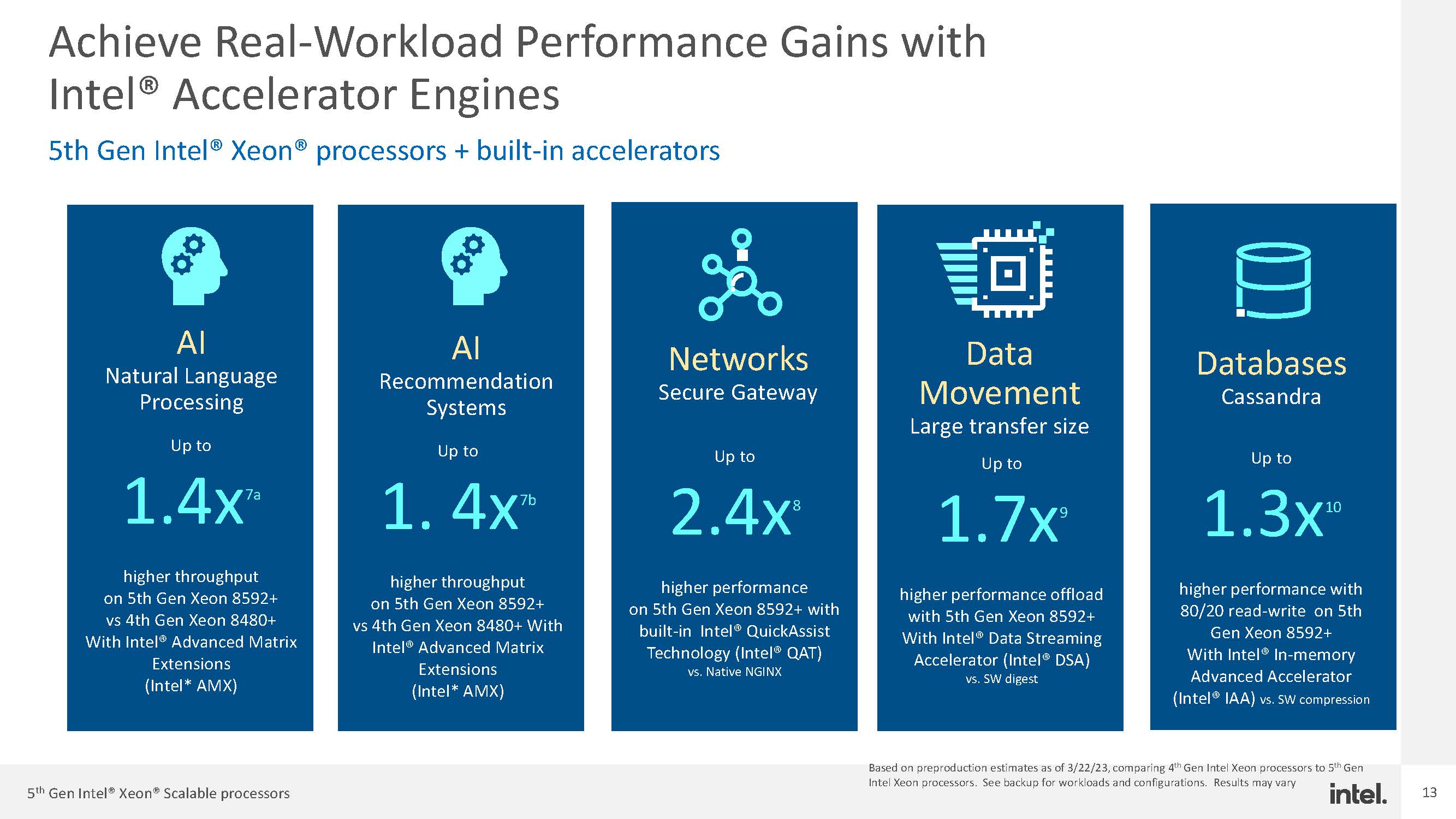
Intel will reveal the company's 5th Generation Xeon (Emerald Rapids) processors on December 14. However, an Intel presentation titled "Data Centric Processor Roadmap" (via InstLatX64) hosted at the European Southern Observatory has spilled the beans on what Emerald Rapids brings to the server market.
Based on the same Intel 7 node as Sapphire Rapids, Emerald Rapids promises better performance per watt, pushing more cores and L3 cache. Using the Xeon Platinum 8592+ (Emerald Rapids) and the Xeon Platinum 8480+ (Sapphire Rapids) for comparison, Intel claims that the former provides up to 1.2X higher web (server-side java) performance, 1.3X higher HPC (LAMMPS- Copper) performance, and 1.2X higher media (transcode FFMPEG) performance. The chipmaker's performance figures seem credible since Emerald Rapids wields the faster Raptor Cove cores than Sapphire Rapids, which uses Golden Cove cores. Moreover, the upcoming Xeon Platinum 8592+ has eight more cores than the existing Xeon Platinum 8480+.
Given the recent AI boom, Intel didn't forget to highlight Emerald Rapids' substantial performance gains in AI thanks to the company's built-in AI accelerators and Intel Advanced Matrix Extensions (Intel AMX). Intel's projecting uplifts between 1.3X to 2.4X, depending on the workload.
Emerald Rapids will also have higher native DDR5 support and an enhanced Ultra Path Interconnect (UPI). While Intel didn't go into details, we expect Emerald Rapids to embrace DDR5-5600, up from the DDR5-4800 on Sapphire Rapids. Meanwhile, Intel has likely upgraded the UPI speed from 16 GT/s to 20 GT/s on Emerald Rapids. Intel confirmed that Emerald Rapids will continue to provide 80 PCIe 5.0 lanes for expansion but appears to have added Compute Express Link (CXL) bifurcation, according to the slide deck.





Even more interesting, though, is that Intel provided a die shot of Emeralds Rapid. The floorplan shows a two-die design instead of the four-die design on Sapphire Rapids. Nonetheless, Emerald Rapid's overall area is rumored to be smaller than Sapphire Rapids, which may result from Intel's rework on the layout to optimize space. Downsizing helps improve latency. The two big dies are connected through a modular die fabric.
Intel hasn't confirmed the core count on each Emerald Rapids die, but the current speculation is that each die houses 33 cores with one disabled core. Therefore, the highest Emerald Rapids chip, which appears to be the Xeon Platinum 8592+, maxes out at 64 cores instead of 66. The increase in L3 cache is Emerald Rapids' most attractive selling point. Intel increased the L3 cache from 1.875MB per core on Sapphire Rapids to 5MB per core on Emerald Rapids, equivalent to a 2.6X upgrade. As a result, the top 64-core chip will have a whopping 320MB of L3 cache.
Emerald Rapids' blueprint shows two memory controllers per die, so that's four in total. Each controller should manage two memory channels, enabling Emerald Rapids to retain eight-channel memory support, the same as Sapphire Rapids. Meanwhile, the diagram also shows three PCIe controllers, two UPI, and two accelerator engines per die.
Intel 5th Gen Xeon Emerald Rapids Specifications*
*Specifications are unconfirmed.
Hardware detective momomo_us has shared a list of the alleged Emerald Rapids processors that Intel will unleash on the server market. The Xeon Platinum 8593Q appears to feature the same 64-core, 128-thread configuration as the Xeon Platinum 8592+, which Intel used for comparison. However, the former has a 100 MHz higher base clock, and the "Q" suffix denotes that it's an SKU with a lower Tcase tailored for liquid cooling. Meanwhile, the Xeon Platinum 8592V is a variant of the Xeon Platinum 8592+ that is better optimized for SaaS cloud environments.
Intel has prepared a thorough stack of Emerald Rapids to compete at every price bracket. The Xeon Platinum models range from 12 to 64 cores; meanwhile, the Xeon Gold spans between 12 and 36 cores. Lastly, the entry-level Xeon Silver SKUs have low core counts starting from six cores.
Emerald Rapids is drop-in compatible with Intel's current Eagle Stream platform with the LGA4677 socket, thus improving the cost of ownership (TCO) and minimizing the server downtime for upgrades. Furthermore, the new 10nm chips will allow Intel's customers to refresh their server products to continue competing with AMD's EPYC, specifically the 5th Generation EPYC Turin, which will arrive before the end of the year.







